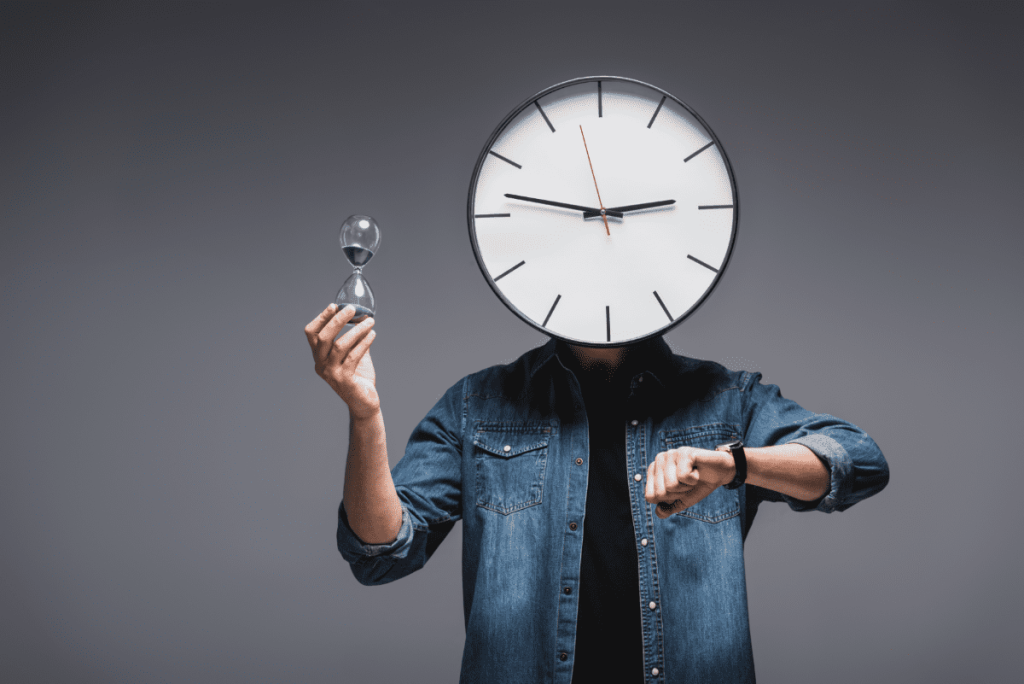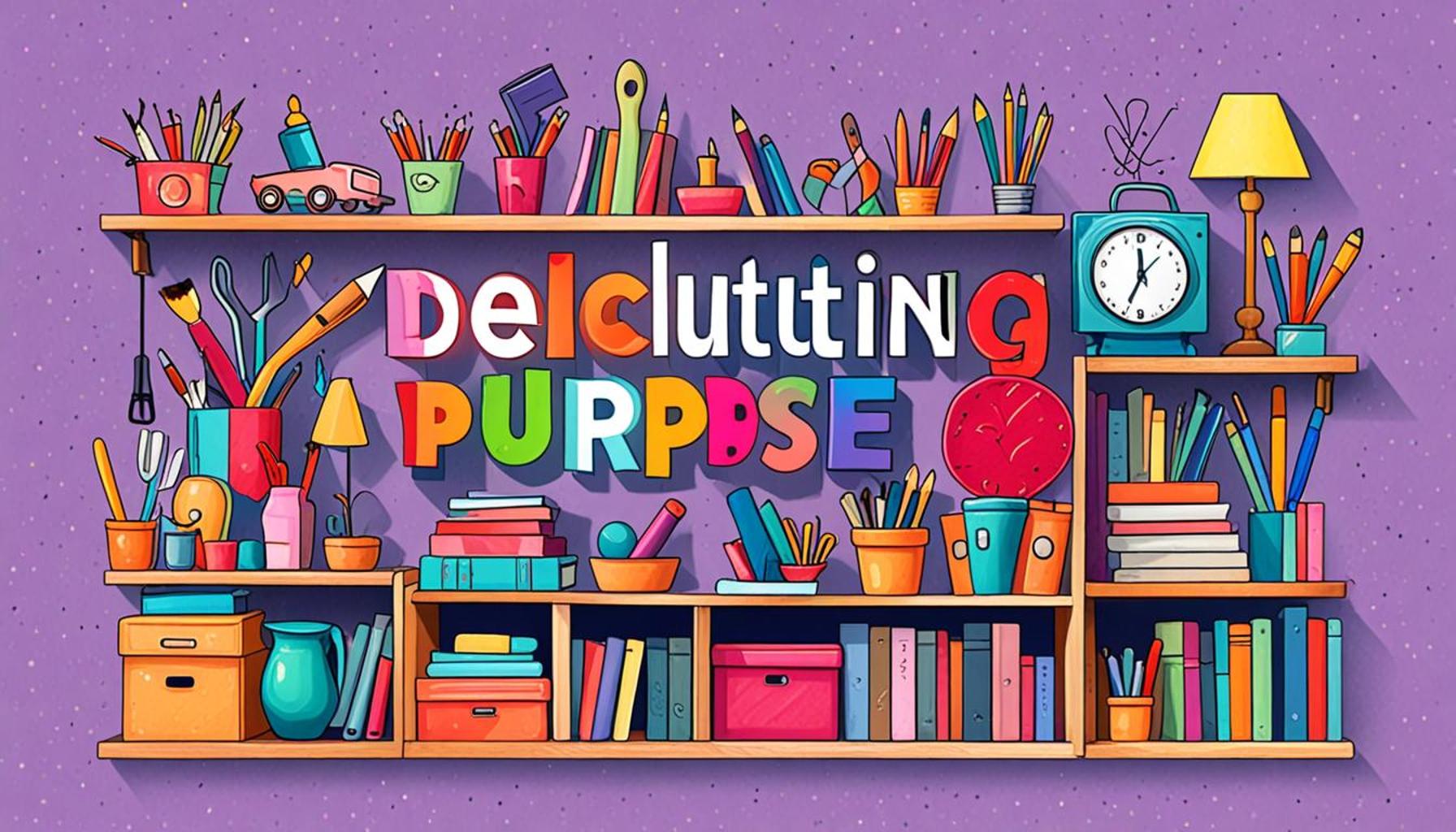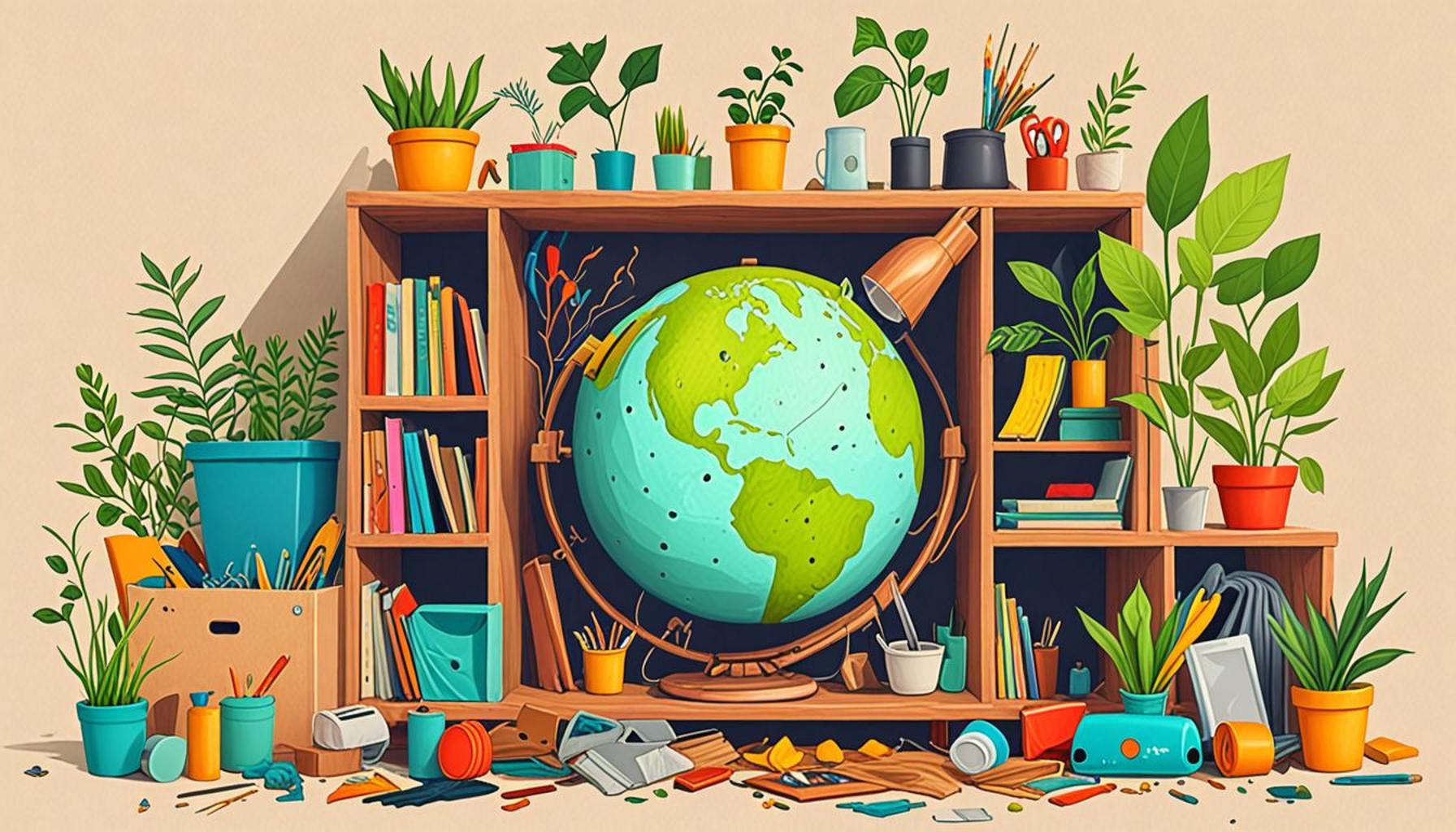The Role of Mindfulness in Decluttering: Techniques to Stay Present While Organizing

Embracing Mindfulness in the Decluttering Process
In today’s hectic environment, the concept of decluttering can often feel insurmountable, leaving many feeling lost amid piles of overwhelming belongings. Yet, the practice of integrating mindfulness into decluttering offers a unique and refreshing path. This approach encourages individuals to be present, transforming what might seem like a daunting task into a profound and meditative experience that fosters both emotional and physical clarity.
Key Aspects of Mindful Decluttering
Adopting mindfulness during the decluttering process can significantly shift perspectives and facilitate deeper connections with your belongings. Here are some essential elements to consider:
- Awareness: Cultivating awareness involves tuning into your emotions and reactions as you sort through your possessions. Are you holding onto sentimental items that evoke joy, or are you burdened by guilt over things you feel obligated to keep? Regularly checking in with your feelings can help you make more conscious decisions about what to keep.
- Focus: Staying present is crucial in the decluttering journey. Limiting distractions—like turning off phones or televisions—encourages a more intentional process. By dedicating specific time blocks solely to decluttering, you can engage fully with each item, evaluating its purpose in your life without external interruptions.
- Intentionality: Ask yourself what truly adds value to your life. Create a simple list of criteria for the items you choose to retain: Does it serve a functional purpose? Does it evoke happiness? Is it a representation of your values? This intentional approach enables clearer decision-making and ultimately transforms your space.
Mindfulness Techniques to Enhance Your Experience
Incorporating mindfulness techniques not only alters how you perceive the act of organizing but also significantly improves your overall mental well-being. Practices such as deep breathing can calm your mind and allow you to create a peaceful environment. Before starting to declutter, take a moment to sit quietly, close your eyes, and breathe deeply. This simple act can help center your thoughts, making the experience less burdensome and more therapeutic.
Furthermore, consider the Japanese philosophy of Ikigai, which promotes finding joy and purpose in what you do, including the act of decluttering. Reflect on what brings you happiness and how your current belongings align with those values.
As you delve into the transformative journey of mindful decluttering, you may uncover a profound clarity that extends beyond just your physical environment. The peace cultivated in your surroundings can lead to an uplifted spirit and clearer mindset. Embrace these practices, and you might find that an organized space does not merely reflect a tidy lifestyle—it permeates into your emotional and mental realms, fostering serenity in an otherwise chaotic world. Prepare to transform your surroundings into a haven that genuinely resonates with your core values and aspirations.

DISCOVER MORE: Click here to learn how organization impacts your well-being
Mindful Techniques to Enhance Your Decluttering Journey
When tackling the often-daunting task of decluttering, employing mindfulness techniques can transform your experience from a stressful chore into a holistic practice. These techniques not only assist in organizing physical space but also promote mental clarity and emotional well-being. Here are several effective methods that can deepen your connection to the decluttering process:
- Set a Clear Intention: Before diving into decluttering, take a moment to define your purpose. Whether you want to create a more peaceful living environment, simplify your space, or renew your energy, articulating this intention can guide every decision you make. By being clear about your motivation, you’ll find it easier to let go of items that no longer serve you.
- Engage the Senses: Incorporating sensory experiences during the decluttering process can ground you in the moment. Play soft music, light scented candles, or even use essential oils to create a calm atmosphere. As you sort through your belongings, intentionally notice the texture, color, and even the sounds of your environment. This sensory engagement helps anchor your awareness and increases the joy in the process.
- Practice Gratitude: While decluttering, take a moment to express gratitude for the items you once cherished. Reflecting on the role they played in your life can reduce feelings of guilt or resistance when deciding to part with them. Acknowledging how they’ve served you—perhaps as gifts or memories—can facilitate a smoother transition as you let go.
- Break it into Segments: Instead of overwhelming yourself by attempting to declutter your entire home, consider breaking the process into smaller, manageable segments. You might choose a single room, closet, or even a designated drawer. Marking these boundaries allows you to focus your attention fully and celebrate small victories, which can boost your motivation and sense of accomplishment.
These mindfulness techniques encourage a deeper, more intentional engagement with your belongings and can enrich your overall experience. They provide the opportunity to pause, reflect, and truly understand the essence of your possessions in relation to your life.
Additionally, mindfulness can help alleviate feelings of anxiety or procrastination often associated with decluttering. By focusing on the present moment, you may find that not only does the act of organizing become more enjoyable, but it also allows for a clearer mind and a more serene environment that reflects your true self.
As you embrace these mindful techniques, remember that decluttering is not just about removing physical clutter but rather about creating a space that encourages peace and clarity. The journey may be transformative, leading you to discover the true meaning behind your belongings and their place in your life.
Continuing our exploration of the role of mindfulness in decluttering, it’s essential to understand the relationship between our surroundings and our mental state. The act of organizing can often feel overwhelming, but incorporating mindfulness techniques can transform a mundane task into a fulfilling experience. By engaging in mindfulness, individuals can fully immerse themselves in the process, turning what traditionally feels like chaos into a meditative practice.
One effective technique is focused attention. When tackling a decluttering task, focus on one area or item at a time rather than the entire space. This reduces feelings of being overwhelmed and allows for deeper engagement with each object. As you sort through your belongings, take a moment to reflect on the purpose and sentiment behind each item. This practice encourages a sense of appreciation, enabling you to make decisions rooted in clarity rather than impulse.
Another powerful practice is the use of breath awareness. Pausing to breathe deeply can center your thoughts and emotions, easing anxiety that often accompanies decluttering. When you feel the urge to rush through the process, a few intentional breaths can ground your focus back to the task at hand. This simple technique enhances your ability to discern what you truly need, fostering a more intentional approach to your environment.
In addition, employing mindful visualization can aid in the decluttering process. Take a moment to visualize your ideal space and how it will function in your daily life. This mental image not only serves as motivation but also clarifies what items genuinely contribute to your vision. As you curate your belongings, ask yourself whether each item aligns with your envisioned space, creating a clutter-free environment that fosters positivity.
By integrating these mindfulness techniques—focused attention, breath awareness, and mindful visualization—into your decluttering journey, you can cultivate a more meaningful relationship with your possessions. This practice not only enhances your organizational skills but also promotes a sense of tranquility and purpose in your everyday life.
| Mindfulness Techniques | Advantages |
|---|---|
| Focused Attention | Reduces overwhelm, promotes deeper engagement |
| Breath Awareness | Eases anxiety, enhances clarity in decision-making |
| Mindful Visualization | Clarifies purpose, fosters motivation and positivity |
Integrating these techniques into your decluttering routine makes the process smoother while enhancing your overall mental clarity and emotional resilience. As you practice mindfulness, you’ll find that staying present not only enriches the decluttering experience but also paves the way for a harmonious living space that reflects your true self.
DISCOVER MORE: Click here to learn about intentional living and its impact
Embracing Mindfulness during the Decluttering Process
Integrating mindfulness into your decluttering experience can create a profound shift in your perspective and emotional state. While many view decluttering as a task laden with stress and determination, adopting a more mindful approach offers opportunities for personal growth and renewal. Here are additional techniques that can further solidify your practice:
- Prioritize Presence: As you embark on your decluttering journey, remind yourself to stay in the present moment. Pay close attention to your thoughts, emotions, and physical sensations as you engage with each item. Acknowledge any feelings that surface – be it nostalgia, anxiety, or resolve. This recognition allows you to process your emotions healthily rather than suppress them, ultimately leading to clearer decision-making.
- Establish a Decluttering Ritual: Consider transforming your decluttering sessions into a ceremonial experience. Whether it’s setting aside dedicated time each week or creating a specific space, establish a routine that encourages mindfulness. Incorporate positive affirmations, breathing exercises, or even informal meditation before you start. These practices can center your mind, enabling you to approach your belongings with intention and focus.
- Use Mindful Breathing Techniques: Breath control is a powerful tool in mindfulness that can help mitigate feelings of overwhelm. As you sort through items, pause occasionally to take deep, mindful breaths. Inhale slowly through your nose, hold for a few seconds, and exhale through your mouth. Concentrating on your breath can anchor you in the present and provide a momentary respite from the chaos of the decluttering process.
- Visualize Your Ideal Space: Before you begin, take time to visualize what you want your decluttered space to look and feel like. Imagine the calmness and serenity of the area once it is organized. This mental picture serves as motivation, guiding you through the physical act of decluttering and reminding you of the end goal.
These techniques emphasize the importance of mindfulness in not only the decluttering process but also in enhancing your overall quality of life. As you connect with the physical act of organizing your space, you also build a deeper understanding of yourself and what you value. The benefits of mindfulness extend beyond the immediate experience of reducing clutter—each session can become a reflective practice that invites personal insights and promotes emotional resilience.
Furthermore, studies suggest that engaging in mindful decluttering can invoke feelings of calm and satisfaction. According to research published in the “Journal of Environmental Psychology,” individuals who adopt mindfulness while tending to their spaces report lower levels of stress and a greater sense of control over their environments. By creating a space that more accurately reflects who you are, you’ve added layers of personal significance that contribute positively to your mental health.
Incorporating mindfulness into decluttering reveals its potential as a form of self-care, underscoring the connection between your mental state and your living environment. It encourages you to curate a space filled with intention, prompting you to let go of what no longer serves you, while amplifying your focus on what matters most in your life.
DISCOVER MORE: Click here to unlock effective space optimization strategies
Conclusion
In summary, the synthesis of mindfulness and decluttering provides a refreshing perspective on an often-daunting task. By consciously engaging with each item, you not only tackle physical disarray but also foster a profound understanding of your emotional landscape and personal values. The techniques discussed—ranging from prioritizing presence to establishing calming rituals—encourage a focused and intentional approach, transforming decluttering into an enriching experience rather than a mere chore.
Moreover, this journey offers tangible benefits, including reduced stress levels and heightened emotional resilience, as confirmed by studies in related psychological research. Practicing mindfulness throughout the decluttering process can enhance your sense of control in both your environment and your life, creating a harmonious space that resonates with who you truly are. As you embark on your own decluttering journey, embracing mindfulness allows you to connect deeply with your belongings, guiding you to let go of what no longer serves you while celebrating what truly matters.
Ultimately, the act of decluttering is not merely about creating physical space; it’s also about cultivating a state of mind that nurtures peace and clarity. By integrating these mindfulness techniques into your organizing efforts, you can embark on a lifelong practice of intentional living, where each moment spent decluttering serves as an opportunity for reflection and growth. As you create your ideal space, may you also create an ideal version of yourself—one that thrives in simplicity and presence.


